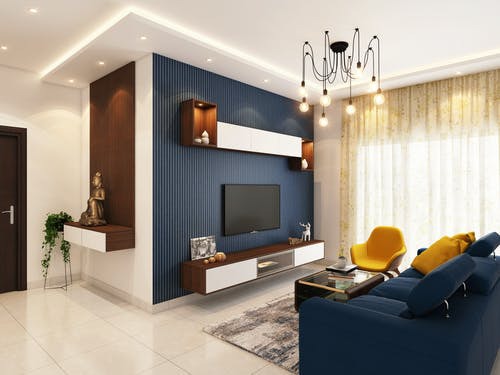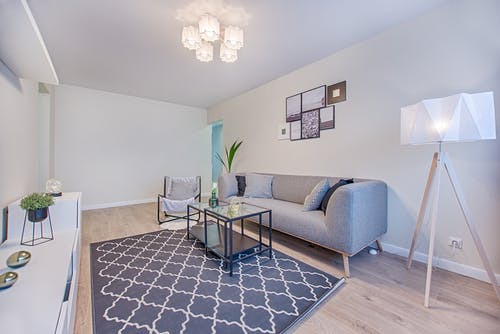
Interior design is an art form that blends creativity, practicality, and aesthetics. Art installations play a crucial role in enhancing the mood and personality of a space. But how do interior designers integrate these installations seamlessly? Let’s explore various techniques used by professionals in the industry.
Understanding the Space
Before choosing any art installation, it’s essential to understand the space. Designers consider room dimensions, lighting, and existing decor. They ask questions like: How often is the space used? What activities happen here? Is this a social or private area? A living room, for example, might call for a bold, eye-catching piece, while a bedroom might benefit from serene, calming art.
Measurements and Proportions
-
Ensure the art piece fits within the designated space without overwhelming it.
-
Consider the furniture scale and room height to maintain balance.
-
Align art pieces with architectural features like windows and doors to create harmony.
Choosing the Right Art
The selection of art is pivotal in establishing the desired atmosphere. Designers often curate pieces that reflect the homeowner’s personality, ensuring the art complements the surrounding decor. They sometimes work closely with collectors or galleries or consult artists directly to acquire custom pieces.
Color and Theme Coordination
Art should resonate with the room’s color palette and theme. Designers may echo color accents found in fabrics or furniture within the art itself. Alternatively, a neutral room might benefit from a vibrant installation that adds a pop of color.
Placement and Arrangement
The placement of art can significantly impact its effect on the space. Designers consider sightlines, ensuring art can be appreciated from various angles. Proper placement enhances room flow and encourages interaction with the piece.
Height and Balance
-
Hang art at eye level for optimal viewing, generally around 57-60 inches from the floor to the center of the art.
-
In multi-level spaces, align pieces across floors for visual connectivity.
-
Use symmetrical arrangements for a formal feel or asymmetrical layouts for a more relaxed vibe.
Lighting and Illumination
Lighting can make or break an art installation. Proper lighting highlights the art’s features, enhances its colors, and can create dramatic effects that transform the room’s ambiance.
Types of Lighting
-
Ambient Lighting: General lighting, like ceiling fixtures, can complement art without directly illuminating it.
-
Accent Lighting: Spotlights or wall-mounted fixtures focus on a specific piece, drawing attention and creating shadows for depth.
-
Natural Lighting: Consider windows and skylights, but ensure the artwork isn’t directly exposed to harsh sunlight, which may cause fading.
Integrating Technology
In today’s tech-savvy world, integrating technology with art is becoming increasingly popular. Designers might incorporate digital art frames, allowing homeowners to change the displayed artwork with a click. Interactive installations can engage audiences, offering a unique experience.
Smart Home Integration
Syncing art installations with smart home systems enhances convenience and control. Adjust lighting, and colors, or change artwork remotely. Plus, technology can be eco-friendly, with LED options and energy-efficient systems.
Framing and Mounting Solutions
The right frame or mounting approach can elevate an art piece. Whether opting for ornate frames to add a touch of elegance or minimalistic frames that allow the art to stand out, designers are meticulous in their selection.
Custom Framing Options
-
Select materials that match the room’s design, such as wood or metal.
-
Consider color schemes, using frames to reinforce or contrast with dominant room colors.
Floating and Invisible Mounts
These modern solutions provide a clean, sophisticated appearance. Floating mounts create the illusion of art hovering away from the wall, whereas invisible mounts tuck behind the artwork for a seamless look.
Texture and Material Considerations
Playing with textures and materials adds depth and interest to art installations. Mixing media can create contrast or blend seamlessly with other room components, enriching the overall ambiance.
Material Contrasts
-
Combine different textures like wood, metal, or glass to complement other room elements.
-
Utilize tactile experiences by varying surface finishes, from matte to glossy.
Working with Professionals
Sometimes, the expertise of a professional is necessary to ensure that art installations are secure and correctly positioned. Relying on trusted California art installers can be essential for handling large-scale or delicate pieces.
Installation Partnerships
-
Collaborate with art installers who understand the nuances of design and space.
-
Leverage their skills for specialized mounting techniques and safety measures.
Utilizing Mirrors as Art
Mirrors aren’t just functional; they’re artistic features that can enhance light, space, and aesthetics. Whether used as standalone pieces or alongside art, mirrors can amplify a room’s visual appeal.
Mirror Aesthetics
Exploring services such as a mirror installation service in Los Angeles helps in perfectly placing mirrors to elevate a room’s design without overshadowing existing art installations. Reflective surfaces can double the impact of art and the surrounding decor.
Transportation of Art Pieces
Moving art from one location to another can be daunting. The risk of damage is a constant concern, but designers frequently employ professional art transportation services to ensure that pieces arrive undamaged and ready for display.
Protective Measures
-
Custom crates and packing materials are designed to cushion art pieces during transit.
-
Climate-controlled transportation to avoid temperature fluctuations and potential damage.
-
Tracking systems to monitor art movements and provide real-time updates.
Personalizing the Process
No two spaces are the same, and creating a personalized design is vital to interior design. Personal items, unique collections, or commissioned pieces can add personal significance and emotional connection to spaces.
Incorporating Client Preferences
Designers actively engage with clients to understand their tastes, needs, and aspirations. This dialogue ensures that art installations are not just decorative but meaningful and reflective of personal history.
Final Thoughts
In conclusion, integrating art installations into interior spaces is a nuanced process that combines art, design, and functionality. Through a thoughtful approach and strategic planning, art can transform spaces, reflect individuality, and create unforgettable experiences. Whether it’s selecting pieces that complement the existing aesthetic or employing the expertise of trusted art installers, the right choices can elevate both residential and commercial settings, adding depth and character that endures.























































